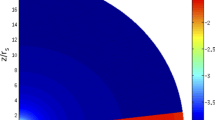Abstract
Subrahmanyan Chandrasekhar (Chandra) was just eight years old when the first astrophysical jet was discovered in M87. Since then, jets have been uncovered with a wide variety of sources including accretion disks orbiting stellar and massive black holes, neutron stars, isolated pulsars, γ-ray bursts, protostars and planetary nebulae. This talk will be primarily concerned with collimated hydromagnetic outflows associated with spinning, massive black holes in active galactic nuclei. Jets exhibit physical processes central to three of the major research themes in Chandrasekhar’s research career – radiative transfer, magnetohydrodynamics and black holes. Relativistic jets can be thought of as ‘exhausts’ from both the hole and its orbiting accretion disk, carrying away the energy liberated by the rotating spacetime and the accreting gas that is not radiated. However, no aspect of jet formation, propagation and radiation can be regarded as understood in detail. The combination of new γ-ray, radio and optical observations together with impressive advances in numerical simulation make this a good time to settle some long-standing debates.
Similar content being viewed by others
References
D J Croton et al, Mon. Not. R. Astron. Soc. 365, 11 (2006)
M C Begelman, R D Blandford and M J Rees, Rev. Mod. Phys. 56, 255 (1984)
A H Bridle and R A Perley, Ann. Rev. Astron. Astrophys. 22, 319 (1984)
K I Kellermann and I I K Pauliny-Toth, Ann. Rev. Astron. Astrophys. 19, 373 (1981)
R D Blandford and A Levinson, Astrophys. J. 441, 79 (1995)
V A Acciari et al, Science 325, 444 (2009)
C C Cheung, D E Harris and L Stawartz, Astrophys. J. 663, 65 (2007)
M Sikora, Ł Stawarz, R Moderski, K Nalewajko and G Madejski, Astrophys. J. 704, 38 (2009)
J L Richards et al, Astrophys. J. Suppl. submitted (arXiv: 1011.3111) (2010)
R A Laing and A H Bridle, Mon. Not. R. Astron. Soc. 336, 1161 (2002)
G Fossati, L Maraschi, A Celotti, A Comastri and G Ghisellini, Mon. Not. R. Astron. Soc. 299, 433 (1998)
K R Lind and R D Blandford, Astrophys. J. 295, 358 (1985)
J Ahrens et al, Astropart. Phys. 20, 507 (2004)
The Pierre AUGER Collaboration, J Abraham et al, Astropart. Phys. 29, 188 (2008)
G B Taylor and R Zavala, Astrophys. J. 722, L183 (2010)
A Tchekhovskoy, R Narayan and J C McKinney, New Astron. 15, 749 (2010)
A A Abdo et al, Nature 463, 919 (2010)
A P Marscher et al, Astrophys. J. 710, L126 (2010)
A C Fabian et al, Mon. Not. R. Astron. Soc. 366, 417 (2006)
L Sironi and A Spitkovsky, Astrophys. J. 698, 1523 (2009)
S Zenitani and M Hoshino, Astrophys. J. 562, L63 (2001)
S Koide, K Shibata, T Kudoh and D L Meier, Science 295, 1688 (2002)
J-P De Villiers, J F Hawley and J H Krolik, Astrophys. J. 599, 1238 (2003)
P C Fragile, O M Blaes, P Anninos and J D Salmonson, Astrophys. J. 668, 417 (2007)
K Beckwith, J F Hawley and J H Krolik, Astrophys. J. 678, 1180 (2008)
J C McKinney and R D Blandford, Mon. Not. R. Astron. Soc. 394, L126 (2009)
M V Barkov and S S Komissarov, Mon. Not. R. Astron. Soc. 385, L28 (2008)
A C Fabian, Ann. Rev. Astron. Astrophys. 32, 277 (1994)
I J Parrish, E Quataert and P Sharma, Astrophys. J. 703, 96 (2009)
R D Blandford and R L Znajek, Mon. Not. R. Astron. Soc. 179, 433 (1977)
S A Balbus and J F Hawley, Rev. Mod. Phys. 70, 1 (1998)
Author information
Authors and Affiliations
Corresponding author
Rights and permissions
About this article
Cite this article
BLANDFORD, R., McKINNEY, J.C. & ZAKAMSKA, N. Hydrodynamic and hydromagnetic stability of black holes with radiative transfer. Pramana - J Phys 77, 53–66 (2011). https://doi.org/10.1007/s12043-011-0111-6
Published:
Issue Date:
DOI: https://doi.org/10.1007/s12043-011-0111-6



